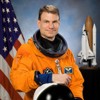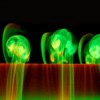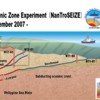SOEST Press Releases: 2007 Archive
|
Dec 10: UH Mānoa Climate Research Center to Partner with Taiwan on Climate Research and TrainingThe climate research center at UH Mānoa, the International Pacific Research Center (IPRC), has been approached by the National Taiwan University (NTU) in its efforts to create international partnerships in climate and weather research. An exchange program for both faculty and graduate students is planned between NTU and the IPRC and the UH Meteorology Department. Initially the focus will be on NTU visits to the University of Hawaii: NTU faculty visits may range from one month to one year; NTU students will audit courses and participate in research at the IPRC, but receive their degree from NTU. The program could be in place as early as Spring 2008. Read more about it.
|
|
Dec 3: Astronaut on Shuttle Flight studied at University of HawaiiStanley Love, a Mission Specialist on the STS-122 scheduled to launch December 6th, 2007, spent time studying at the University of Hawaii at Manoa. Stanley came to the University of Hawaii in 1994 for a postdoctoral research appointment within the Hawaii Institute for Geophysics and Planetology (HIGP) modeling the formation of meteoritic chondrules and the collisional evolution of asteroids, and investigating the possibility of meteorites from the planet Mercury. Read more about it.
|
|
Dec 3: ORE researchers win American Physical Society fluid mechanics competitionOcean and Resources Engineering (ORE) graduate student Miguel Canals and ORE Associate Professor Geno Pawlak's poster on instabilities in oscillating flow was one of the winning entries in the American Physical Society 'Gallery of Fluid Motion' poster competition. These will be published in a special edition of Physics of Fluids journal in 2008.Their entry, entitled "Instability, transition and vortex topology in oscillating flows" shows the flow patterns that develop when a cylinder is exposed to an oscillating flow, as would be the case for a cylinder in the ocean when exposed to waves. “Understanding the dynamics of these coherent vortical features is important to correctly predict the pressure distribution on cylindrical structures,” explains Canals, “an important problem in ocean engineering.” Congratulations, Miguel and Geno! Read more about it.
|
|
Nov 27: ‘Ultrasound’ of Earth’s Crust Reveals Inner Workings of a Tsunami FactoryResearch announced this week by a team of U.S. and Japanese geoscientists may help explain why part of the seafloor near the southwest coast of Japan is particularly good at generating devastating tsunamis, such as the 1944 Tonankai event, which killed at least 1,200 people. The findings will help scientists assess the risk of giant tsunamis in other regions of the world. University of Hawaii at Manoa Professor Gregory Moore along with Geoscientists from the Japan Agency for Marine Earth Science and Technology (JAMSTEC) and The University of Texas at Austin used a commercial ship to collect three-dimensional seismic data that reveals the structure of Earth’s crust below a region of the Pacific seafloor known as the Nankai Trough. The resulting images are akin to ultrasounds of the human body. Read the press release. |
 |
Oct 16: Al Gore’s Vision Gave Rise to Climate Center at UH MānoaDecades before Al Gore received the Nobel Peace Prize, he championed the cause of global warming. He had a vision of accelerating climate-change research through international partnerships. In 1995, as US Vice President in the Clinton administration, he informally discussed such cooperation with Japan’s Prime Minister Murayama. After several preliminary meetings, Gore met with Japan’s Prime Minister Ryutaro Hashimoto in March, 1997, to discuss cooperation through the “Japan-United States Common Agenda for Cooperation in Global Perspective.” At the meeting they officially decided to include “global change research and prediction.” Read the press release. |
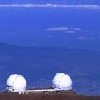 |
Oct 11: UH Mānoa researchers look to the horizon of future planet searchesIn a paper published this week in the journal Science, three University of Hawaii at Mānoa researchers (including lead author Eric Gaidos, who is an associate professor in the Department of Geology & Geophysics and the NASA Astrobiology Institute at UH Mānoa) review the prospects for discovering smaller planets more like Earth, some of which may even have conditions suitable for life. Astronomers reported the first planet around another Sun-like star in 1995 and since then have found more than 200 such planets, all thought to be “gas giants” made mostly of hydrogen and helium like Jupiter and Saturn in our Solar System. Read the press release. |
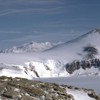 |
Sept. 27: Sunlight: Terminator of Ice Age in Southern HemisphereGreater heating from the sun during Antarctic spring very likely triggered the end to the last ice age in the Southern Hemisphere according to a new study published in Science. The study, co-authored by Axel Timmermann, Associate Professor at the IPRC and the Department of Oceanography, changes current thinking on last ice age ending. Read the press release. |
 |
Sept. 24: Hawaii Sea Grant: Past innovations pioneered the future of deep seawater cooling technologiesCramped and perspiring in the stifling heat of his small Keahole laboratory van nestled amidst an endless expanse of lava, University of Hawai‘i Sea Grant College Program (UH Sea Grant) funded researcher Dr. Arlo W. Fast worked diligently on his most current aquaculture project: growing Pacific Northwest salmon using cold, deep seawater pumped from the depths. In their cool water habitat at the site, the salmon were thriving. In his oppressively humid work surroundings, Dr. Fast was in need of relief from the heat. Read the press release. |
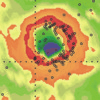 |
Sept. 6: New lightning sensors warn of hurricane's power from far awayA recent study by Meteorology researchers Steven Businger and Kirt Squires introduces a new way of detecting lightning outbreaks within a hurricane over the ocean in real time from thousands of miles away, giving forecasters new insight into just how powerful an oncoming storm may be. As a result, researchers can investigate with greater accuracy whether the rate of lightning strikes produced within a hurricane's eyewall is tied to the changing strength of that hurricane. The hurricane eyewall is that inner heat-driven region of the storm where the most intense rainfall and most powerful winds occur. Read the press release. |
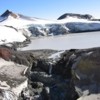 |
July 13 :University of Hawaii researchers capture unique volcanic mudflow event in New ZealandVolcanologist Sarah Fagents from the School of Ocean and Earth Science and Technology (SOEST) at the University of Hawaii at Manoa (UHM) had an amazing opportunity to study volcanic hazards first hand and to document the effects when a volcanic mudflow broke through the banks of a volcanic lake while on a research trip to Mount Ruapehu in New Zealand. Fagents and colleague Bruce Houghton were there on a National Science Foundation (NSF) funded project to study the long-forecast Crater Lake break out lahar at Mount Ruapehu. Read the press release. |
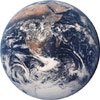 |
May 29 : UH Mānoa launches new Space programThe University of Hawai‘i is becoming the first university in the world with the capability to design, build, launch, and control its own satellites. The Ma¯noa campus this month established the Hawai‘i Space Flight Laboratory (HSFL) – combining researchers from the College of Engineering and the School of Ocean and Earth Sciences and Technology (SOEST) – with the goal of launching its first space mission by Fall 2009. The project is getting off the ground with a $4 million appropriation authored by U.S. Senator Daniel K. Inouye for the LEONIDAS (Low Earth Orbit Nanosat Integrated Defense Autonomous System) program. The federal funds, estimated to eventually grow to approximately $40 million, will cover two launches and two spacecraft, with the first mission slated for the 2009 fiscal year. Read the press release. |
April 26 : Ocean’s ‘Twilight Zone’ Plays Important Role in Climate ChangeA major study has shed new light on the dim layer of the ocean called the “twilight zone”—where mysterious processes affect the ocean’s ability to absorb and store carbon dioxide accumulating in our atmosphere. The results of two international research expeditions to the Pacific Ocean, published April 27 in the journal Science, show that carbon dioxide —taken up by photosynthesizing marine plants in the sunlit ocean surface layer—does not necessarily sink to the depths, where it is stored and prevented from re-entering the atmosphere as a greenhouse gas. Instead, carbon transported to the depths in sinking particles is often consumed by animals and bacteria and recycled in the twilight zone—100 to 1,000 meters below the surface—and never reaches the deep ocean. SOEST researchers Robert Bidigare and David Karl are authors in this study. Read the press release. |
|
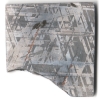 |
April 19 : A New Origin for Iron Meteorites DiscoveredAn article in the prestigious science journal Nature goes a long way toward resolving a controversy about asteroids and meteorites that has raged in the scientific community since the 1960s. What do key data about the cooling rates of material inside these heavenly bodies indicate about their makeup and formation, and the origins of planets? A research team that includes Ed Scott from the Hawaii Institute for Geophysics and Planetology has discovered evidence in iron meteorites that shows that planetary embryos, approximately 1000 km is size, formed less than one million years after the birth of the solar system, and quickly began colliding. Read the press release. |
|
April 18 : First Regional Sea Grant Forum Held in Micronesia to Address Natural Resource IssuesGrowing island populations and the rapid depletion of natural resources are having a profound impact on coastal communities throughout the Pacific. To address these challenges, representatives from the University of Hawai'i Sea Grant College Program (Hawai'i Sea Grant) will facilitate three regional forums in an effort to streamline the management of marine and coastal areas. The first forum will be held in Micronesia beginning on Friday, April 20th in Majuro, Republic of the Marshall Islands. Read the press release. |
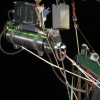 |
April 9 : New ocean bottom observatory successfully deployed off HawaiiAt 3:00 AM, February 16, 2007, an acoustic release was fired, allowing the ALOHA Cabled Observatory (ACO) to settle to its new home on the ocean floor at Station ALOHA, the National Science Foundation (NSF) funded oceanographic research site approximately 100 km north of Oahu. Within minutes, observers at the AT&T Makaha Cable Station were listening to humpback whale song, inaugurating the beginning of data collection from the ACO.Read the press release. |
News archives: 2015 • 2014 • 2013 • 2012 • 2011 • 2010 • 2009 • 2008 • 2007 • 2006 • 2005 • 2004 • 2003 • 2002Press release archives: 2015 • 2014 • 2012 • 2012 • 2011 • 2010 • 2009 • 2008 • 2007 • 2006 • 2005 • 2004 and earlierIf you have news to share, or would like more information about any of the above, please contact:
Mahalo! (Thank you!)
|
|

